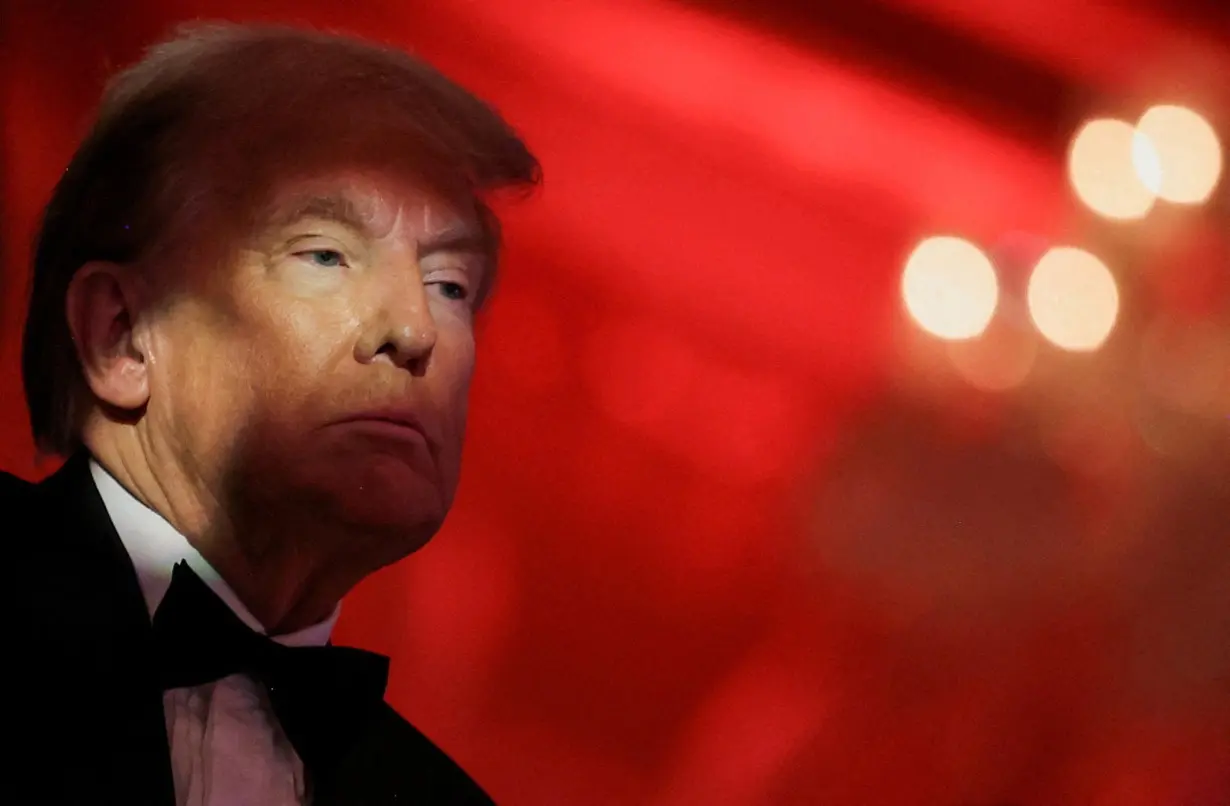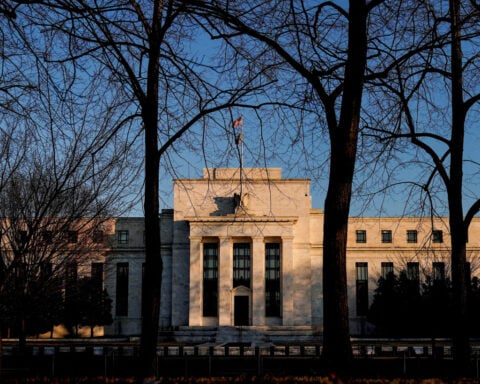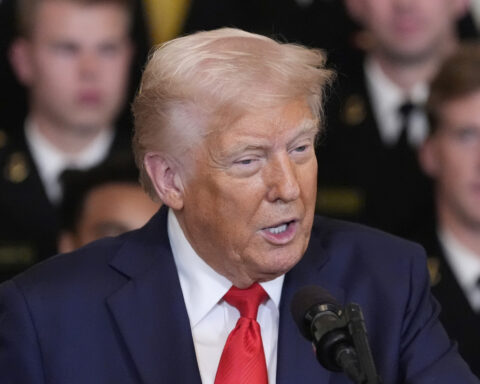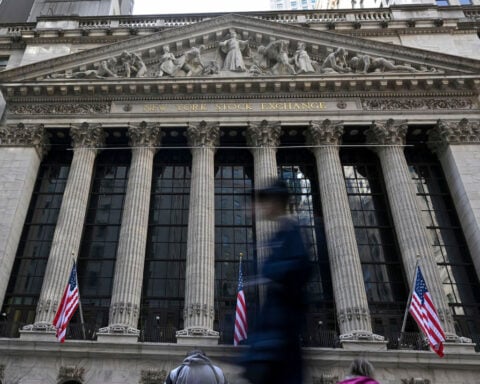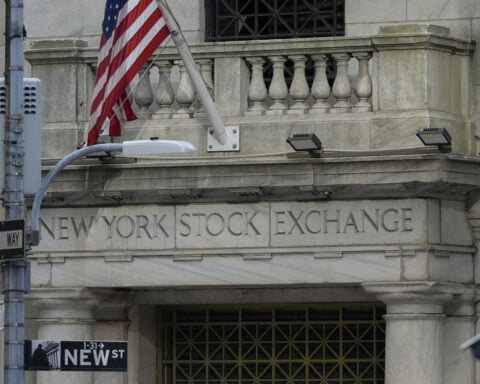(CNN) — President-elect Donald Trump’s pledge to impose massive tariffs was an early warning shot to try to force the hand of allies and adversaries to come to the negotiating table on immigration and trade issues, a transition official told CNN.
Trump on Monday vowed hikes in the taxes American companies must pay on goods imported from Mexico, Canada and China starting on his first day in the White House, unless those countries comply with his demands to crack down on migration and drugs flowing into the United States.
“Why not? No surprises,” the transition official told CNN. “We know what works.”
Trump’s posts Monday on Truth Social appeared to be the opening act in a long-promised trade war with China and North American countries – as well as the latest illustration of how the president-elect plans to force other countries to help the United States stem the flow of migrants and drugs into ports and across borders, as he often vowed on the campaign trail.
It comes despite warnings that tariff hikes, if they come to fruition, could increase inflation. A Goldman Sachs analysis on Tuesday projected that Trump’s proposed hikes would increase the core personal consumption expenditures index — a key inflation gauge that excludes food and energy costs — by 0.9%. And Matt Priest, the president of the leading footwear industry trade group Footwear Distributors & Retailers of America, warned that Trump’s proposed tariffs would “directly increase costs for retailers and consumers, leading to higher prices on everyday essentials like shoes.”
But it’s a strategy that stems from a belief that similar threats worked in Trump’s first term in the Oval Office, the transition official said. During those four years, Trump took a hardline — and at times, scattershot — approach toward Latin America, which was largely the source of migration to the United States. That approach included levying consequences, like sanctions, and threatening and imposing tariffs.
The Goldman Sachs analysis also described Trump’s tariff announcement as “more reminiscent of the first Trump administration, when such tariffs were announced as a negotiating tactic.” Trump ultimately declined to impose some of his proposed tariffs.
In 2019, tariff threats ultimately resulted in Mexico giving in to the expansion of one of the Trump administration’s key immigration policies, known as “remain in Mexico,” according to two sources familiar with the matter. The unprecedented policy required migrants to stay in Mexico for the duration of their immigration proceedings in the United States.
At that time, Trump’s 25% tariff threat on Mexico was short-lived and resulted in a deal within a matter of weeks, spurred by a delegation of Mexican officials that traveled to Washington for urgent talks. Trump’s then-senior adviser Stephen Miller and top aides to then-Vice President Mike Pence led the negotiations on behalf of the United States.
If the talks had dragged out, prominent business lobbies had prepared to sue the Trump administration, alleging that the tariffs were not an adequate response to a non-trade issue.
CNN previously reported that Trump’s team is gaming out a similarly aggressive strategy toward Latin America that will be a crucial element to plans to deport migrants and stem migration.
The president-elect is moving forward with that approach despite the leaders of neighboring countries responding that it won’t achieve Trump’s stated goals, and would trigger a mutually destructive trade war.
Mexican President Claudia Sheinbaum said at a news conference Tuesday that “neither threats nor tariffs will solve the issue of migration or drug consumption.”
“Imposing one tariff would mean another comes in response, continuing like this until we put shared companies at risk,” she said.
“For example, some of the largest exporters from Mexico to the United States are General Motors, Stellantis and Ford Motor Company, which arrived in Mexico 80 years ago,” Sheinbaum said. “Why impose a tax that puts them at risk? It’s unacceptable and would cause inflation and job losses in Mexico and the United States.”
Renegotiating his own trade deal
The timing of Trump’s social media posts might have been a surprise, but their content was not.
On the campaign trail, he frequently pledged to use tariffs as a negotiating tool to bend China and North American countries’ policies to his will.
His advisers have acknowledged privately that tariffs could be more urgently slapped on Canada and Mexico, as Trump seeks to fulfill his campaign pledge to renegotiate his own free trade agreement.
In July, Canada implemented a 3% tax on the profits of large foreign technology companies operating in the country — a move that both President Joe Biden’s outgoing administration and the incoming Trump team view as discriminatory and in violation of a 2018 trade deal between the United States, Canada and Mexico.
During Trump’s first term, the three countries spent more than a year hammering out that deal — the US-Mexico-Canada Agreement — to replace the North American Free Trade Agreement, which went into force in 1994.
The new deal requires all three countries to renew it by July 1, 2026, to keep it in force — and Trump’s team is expected to call for renegotiating parts of the deal. Advisers see the new tariff threat as a way to build leverage for Trump going into those talks.
Trump telegraphed that approach in an October speech at the Detroit Economic Club, where he said that upon taking office, he would “formally notify Mexico and Canada of my intention to invoke the six-year renegotiation provision of the USMCA that I put in.”
Trump is said to want to open trade negotiations with Canada as quickly as possible after taking office.
Howard Lutnick — the co-chair of Trump’s transition effort and his pick for Commerce secretary — said in a CNBC interview before the election that “of course” tariffs are a “bargaining chip,” and would help remove barriers to American-made goods in other countries.
“This is just negotiating,” he said. But Lutnick added that Trump wouldn’t seek to slap price-raising tariffs on goods that aren’t made in the United States.
“Do we make a lot of money on tariffs? Or we bring productivity here and we drive up our workers here?” Lutnick said. “So it’s a win-win scenario.”
CNN’s Matt Egan and David Goldman contributed to this report.
The-CNN-Wire
™ & © 2024 Cable News Network, Inc., a Warner Bros. Discovery Company. All rights reserved.

 Trump has begun another trade war. Here's a timeline of how we got here
Trump has begun another trade war. Here's a timeline of how we got here
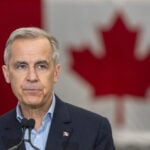 Canada's leader laments lost friendship with US in town that sheltered stranded Americans after 9/11
Canada's leader laments lost friendship with US in town that sheltered stranded Americans after 9/11
 Chinese EV giant BYD's fourth-quarter profit leaps 73%
Chinese EV giant BYD's fourth-quarter profit leaps 73%
 You're an American in another land? Prepare to talk about the why and how of Trump 2.0
You're an American in another land? Prepare to talk about the why and how of Trump 2.0
 Chalk talk: Star power, top teams and No. 5 seeds headline the women's March Madness Sweet 16
Chalk talk: Star power, top teams and No. 5 seeds headline the women's March Madness Sweet 16
 Purdue returns to Sweet 16 with 76-62 win over McNeese in March Madness
Purdue returns to Sweet 16 with 76-62 win over McNeese in March Madness
